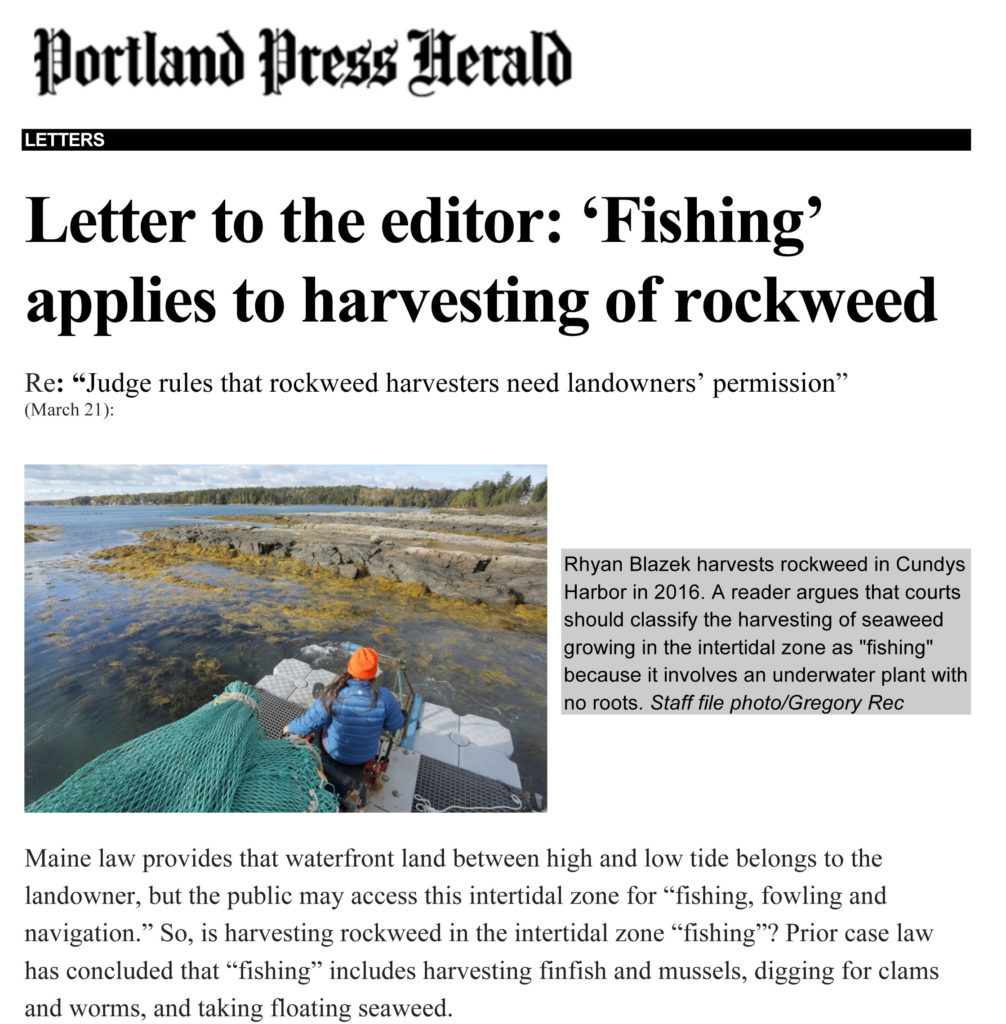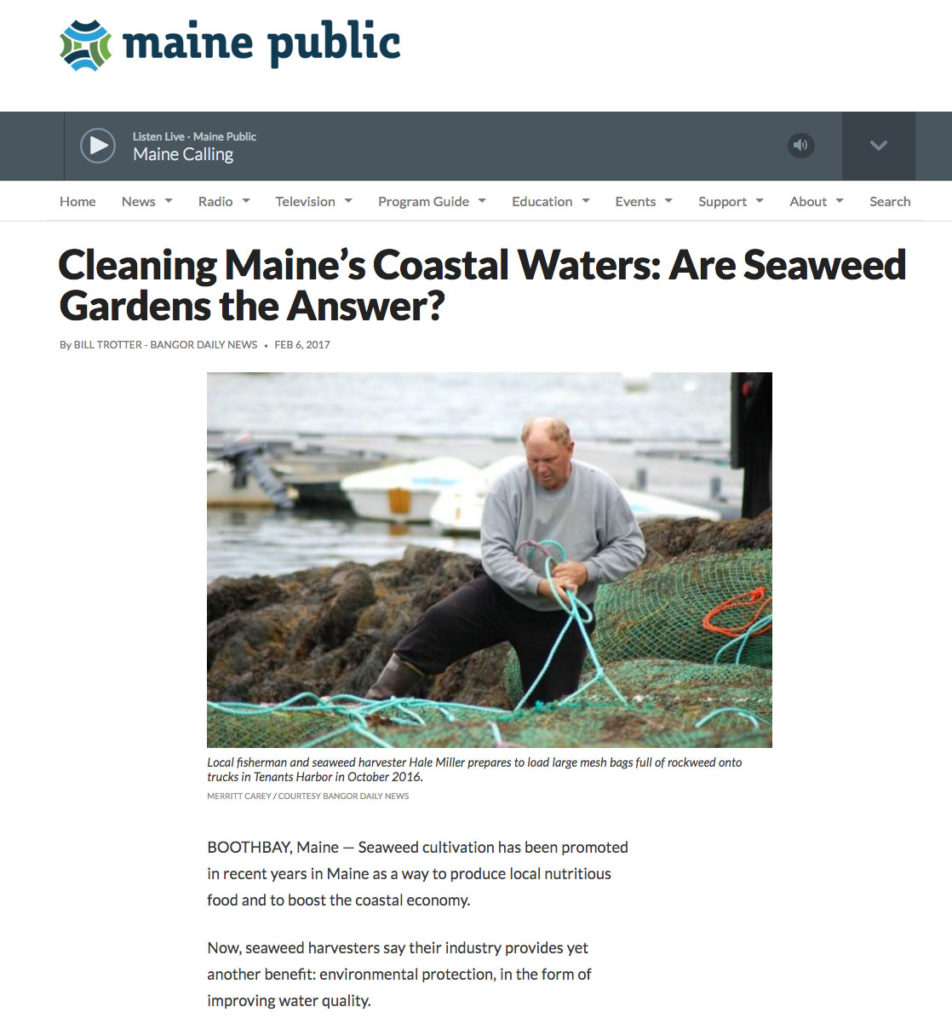Has Maine’s high court issued a public invitation to the beach?
Download full article as a PDF here.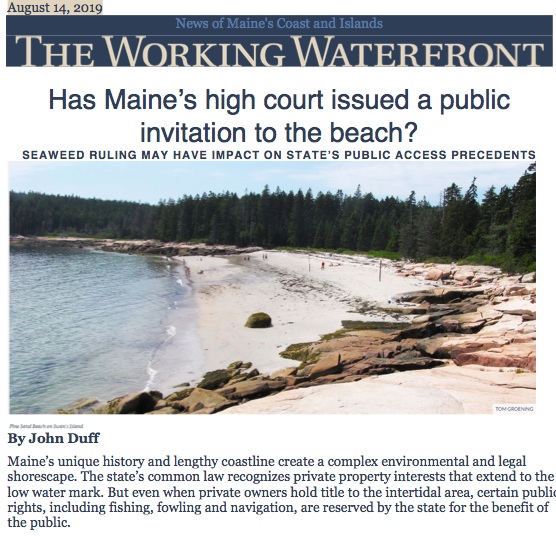
Responsibly harvesting seaweed is good for ocean and crops

George Seaver | Sunday, July 7, 2019 (continued from home page)
To show how this sector benefits the economy of Maine and our ability to grow more food with fewer chemical fertilizers and pesticides, I’ll tell you what happens with the seaweed we buy. It’s brought to our factory in Waldoboro, where it is processed by our 20-plus employees to turn it into products that are then sold directly to farmers or major fertilizer manufacturers, who add it to their products.
The seaweed we buy is harvested by hand and brought to Waldoboro in a pickup truck. So far this season, we have produced enough product for about 200,000 acres of food production. Here’s what’s remarkable. An application of our seaweed extract to an acre of potatoes, for example, helps the grower to produce between 1,000 and 2,000 additional pounds of potatoes per acre. That means that we’ve not only helped to grow more food in a way that’s environmentally friendly, we’ve also created jobs and added to the local economy many times over as the seaweed makes its way from the ocean to the farm.
The conversation about seaweed harvesting, which recently reached the Maine Supreme Judicial Court, is about more than seaweed. It’s about Maine’s relationship with the traditional working waterfront and a way of life that is productive and understands that our ability to operate in the future is based on our respect for those resources today.
There are some who understandably speak out in concern about the environment. I appreciate that. It’s the reason that I came to Waldoboro more than four decades ago. My time on the ocean with my family is probably my greatest joy. But our harvest is nowhere near an amount warranting environmental concern.
It is true that in the past couple of decades the commercial harvesting of seaweed has grown, but it’s only grown to about 2 percent of the seaweed along the coast. In contrast — and this is critical to understand — each year natural forces, such as tides, ice and sea life “harvest” about 40 percent of the seaweed. (University of Maine, Dr. Vadas, 2004)
In the 40-plus years of commercial harvesting, there have been no reports of any changes to the coastal ecosystem that have been caused by commercial seaweed harvesting.
And here’s what else we must recognize – harvesting seaweed, when it’s done responsibly, can actually be good for the ecosystem. Responsible harvesting causes seaweed to grow back thicker, and that helps reduce the buildup of carbon in the ocean, called ocean acidification. This acidification is bad for our oceans and is predicted to damage our lobster and shellfish industries. There is evidence it’s already happening.
We should certainly proceed with caution with our natural resources, but there’s no reason to bring harvesting to a grinding halt when there is no evidence of environmental damage.
For those who are concerned, I propose we study the area near Cundy’s Harbor, where we can compare coastal areas that have been harvested systematically for 40 years to those that have been left untouched. We have robust records and an opportunity to further understand the potential long-term impact of harvesting. We are ready to help.
When all is said and done, progress is about balancing risks and benefits. The benefits are clear when it comes to harvesting seaweed: it brings jobs and money to the state, it helps us to grow more food in the safest way possible so we can feed more people, and it can help push back on ocean acidification.
Harvesting seaweed may only be a small part of our Maine traditional working waterfront, but the benefits are only growing.
George Seaver owns Ocean Organics, a manufacturer of seaweed-based fertilizer, in Waldoboro.

An Interview with Bonnie and Greg Tobey, Source Inc. | June 2019 (continued from home page)
Source started with a horse named Hull. In 1969, Susan Domizi was training Hull for the Olympic equestrian team when he began suffering from health problems for which Domizi could find no cure. She took a chance on a seaweed-based product from Ireland and noticed significant improvements, despite being unimpressed with the quality of the ingredients. As a biochemist, Domizi took it upon herself to develop a high-quality nutritional supplement using rockweed, a type of seaweed found locally. Domizi realized that the micronutrients found in seaweed are nutrients that are typically lacking in highly processed foods and in food raised in depleted soils. After extensive research and consultations with experts, she formulated a blend to use in horses’ food to help with a variety of health issues, including hoof and coat condition and weight gain. Word soon spread about its success and by 1975, Domizi became a reluctant entrepreneur as the founder of Source, Inc.
Source’s commitment to quality and sustainability has allowed the company to withstand the test of time in an era when nutritional trends easily come and go. In 1993, Domizi co-founded the Maine Seaweed Council, an organization dedicated to the sustainability of the seaweed resource and, in 2003, she designed a new hand rake for more efficient harvesting. In 2007, Domizi’s husband designed a mechanical harvester to improve efficiency, reduce by-catch (marine organisms that are inadvertently harvested along with the seaweed), and ensure that the seaweed was being cut above the state-mandated height of 16”. After many years with two mechanical harvesters, H1 and H2 (Harvester 1 and Harvester 2), Source launched a new, more efficient mechanical harvester, H3, designed to create less noise in response to concerns from neighbors on the water.
Although Domizi retains ownership of the company, the Tobeys are now the consistent presence along Harpswell’s shores. The Tobeys have been involved in running Source’s day-to-day operations for the past several years. After working in the corporate world, banks, and hospitals, Bonnie was ready for a change. She started working at Source in 2011 as the Production Manager and Greg joined the team as the General Manager in 2013, after having spent a number of years as the Director of Fleet and Facilities at a nonprofit sailing company in Boston. Both Greg and Bonnie have been actively involved with the Maine Seaweed Council for the past several years.
“We’re doing a delicate dance. We’ve spent a long time trying to work with our neighbors on the water and develop relationships with these people. We care about people, we genuinely do. They know our reputation,” explains Bonnie.
Over the course of forty years, Source has implemented a series of practices designed to promote the long-term viability of the seaweed resource in Harpswell’s waters. Source rotates its harvest between twenty sectors in and around the New Meadows River and Quahog Bay, alternating locations to encourage rejuvenation; each sector is harvested and then allowed to rest for three years. Source hires and trains harvesters who are paid an hourly rate as company employees, instead of using self-employed contractors who are paid by the pound. This ensures that harvesters abide by company policies for purposes of quality control. Company policy does not allow employees to harvest during spore season (November to May) to sustain the longevity of the resource, or on weekends out of respect for neighbors with concerns about noise. Harvesting locations are determined in advance by Greg, who plans according to detailed records going back decades with specific information about who harvests what, where, and when. Records also show the changes in by-catch from a time when hand raking was the primary form of harvesting; since the implementation of the mechanical harvesters, by-catch has been greatly reduced. Mechanical harvesters are equipped with a sorting table for by-catch, which is then documented and returned to its natural habitat.
Source’s harvesters bring in approximately 18 bags of seaweed a day for a total of 800 pounds (when wet), which is processed at the facility in Brunswick within 24 hours to avoid degradation. After being sorted, shredded, dehydrated, sealed and shipped to Connecticut, Domizi blends seaweed harvested at different times throughout the year to account for the changes in nutrient content. Source now produces soil enhancement blends and nutrition supplements for horses, dogs, and humans, which are sold in 18 countries.
According to Bonnie and Greg, Source has spent the past few decades working to maintain the future of the seaweed resource and will continue to do so, despite changes within the industry that present challenges with no clear solution. Due to the increase in natural healing trends, more people are getting into the business of harvesting seaweed in a time when practices are minimally regulated by the Department of Marine Resources. Regulations require individuals to have a harvesting license, harvest above the 16” height requirement, and document their landings; in Cobscook Bay only, harvesting is limited to 17% of harvestable seaweed in each sector. “I believe that the DMR needs to regulate seaweed harvesting. We need even more regulations taking advantage of the science that’s coming along,” explains Domizi.
Because seaweed harvesting on its current scale is relatively new, there are few studies that have been conducted to determine the long-term viability of various harvesting practices. Source is currently working with four universities, including the University of Maine, University of New England, and Maine Maritime Academy, to conduct studies about seaweed and by-catch. With increased community outreach efforts, Greg and Bonnie hope to educate the public to ensure an understanding of the industry and promote sustainable practices to protect the future of the seaweed resource.
“I hope to see the right regulations. . .We have protected the resource passionately for 40 years now. We need the regulations in place so that 5 or 10 years from now, Source can still harvest in these same beds and take care of them and maintain what we have built. That’s my hope for Source – that we’ll still be around,” explains Bonnie Tobey.
In March 2019, as a result of a lawsuit involving Acadian Seaplants, the Maine Supreme Judicial Court ruled that rockweed grown in the intertidal zone is owned by the upland landowner, thereby requiring harvesters to get permission from landowners before harvesting seaweed. Seaweed harvesters previously operated under a colonial ordinance from the 1640’s which asserts that the public is free to harvest living marine resources in the intertidal zone.
“We consider Harpswell our home and we’ve always tried, and will continue to try, to be good neighbors,” explains Domizi.
With memories of a childhood along the shore, and a life built around the tides, Greg and Bonnie Tobey strive to protect the future of the seaweed that surrounds the island upon which their family has lived and worked since 1859. Domizi and the Tobeys spend their days striking a balance between sharing the health benefits and sustaining the future of one of Maine’s valuable natural resources. “Bonnie and I grew up walking on the seaweed that we’re harvesting and have very deep roots in the area. We are very invested in wanting to see everything work. . . We need the people of the coast of Maine to say, wait a minute, let’s work together,” states Greg Tobey.
LETTERS TO THE EDITOR

By Jessica F. Muhlin and Susan H. Brawley, Opinion guest contributors • April 28, 2019 10:02 am
Updated: April 28, 2019 2:34 pm
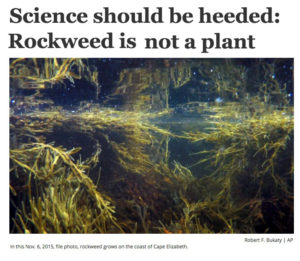
A recent Maine Supreme Judicial Court ruling about the ownership of rockweed was based on a falsity. Rockweed is not a plant. You have more relatedness to the mushrooms you ate on your pizza last Friday than rockweed has to plants.
The mistaken designation of rockweeds as plants has significant environmental and economic consequences. Rockweed should not be subject to overcutting by private owners (directly or indirectly) but needs to be harvested under the regulation envisioned by the Maine Department of Marine Resources, to protect it while providing economic benefits of this valuable marine fishery to Maine.
Humans by nature like to name and place things into groups. Crucially, in the biological world, these groups are not arbitrary, but are real, scientifically discoverable facts. Over the last couple of decades, there have been profound advancements in DNA-based technologies, including in medical diagnoses and treatment. DNA can be used to identify a suspect from crime scene evidence, find out what breed(s) of dog your mutt is, provide genealogical insights into your family’s history, and, no less profoundly, DNA-based technologies aid our understanding of the relatedness of living things.
Many of us learned in school that all living organisms fit into two or five kingdoms, but taxonomic classification has changed radically in recent decades as scientists applied the better DNA techniques to uncover taxonomic relationships. Not only does rockweed differ structurally and biochemically from plants, but powerful DNA analyses demonstrate that rockweeds and other brown algae are stramenopiles that lie in a completely different part of the Tree of Life from plants.
Labeling rockweed inaccurately as a plant fosters fundamental misunderstandings about its basic biology as a marine organism. Plants take up nutrition from the soil. Rockweed grows on hard rock and acquires nutrients from the seawater. If rockweed had been understood to be a different kind of organism than a plant, it might have been designated a living marine resource that is owned by all Mainers and is in the public trust for sustainable regulation and fishing. We regret that the legal proceedings affecting the court’s ruling that rockweed belongs to coastal landowners are grounded in a fallacy.
The people of Maine trust that their judicial system bases decisions on accurate facts, but in the Maine appellate court setting, justices rely on the joint material statement of facts provided by the plaintiff and defendant, which, in this case, stated “rockweed is a plant.” The Supreme Court’s decision included this text: “Harvesting rockweed — which the parties stipulated is a plant — is not a form of ‘fishing.’”
How can this mistake be avoided in the future? First, Maine should establish careful procedures that can permit state courts to appoint scientific advisers when needed, as is the practice in the federal court system. It was clear from the questions during oral argument that one of the justices was uneasy about the outdated “facts” before the supreme court, but the court apparently saw no clear way to the current-day scientific expertise the justice correctly sensed was needed.
Second, if there is no judicial remedy for redefining rockweed accurately, legislative mechanisms should be used to correct the error. Associate Justice Stephen Breyer of the U.S. Supreme Court recently wrote that “the law must seek decisions that fall within the boundaries of scientifically sound knowledge.”
The health of Maine’s coastal ecosystems and marine fisheries depends on applying science to discussions and decisions in Maine.
Jessica F. Muhlin is an associate professor of marine biology at Maine Maritime Academy. Susan H. Brawley is a professor of plant biology and marine science at the University of Maine.View this article online at Bangor Daily News via this link.
LETTERS TO THE EDITOR
![]()
As reported by Stephen Rappaport on March 28 and editorialized on April 4, back-to-back decisions by the Maine Supreme Judicial Court (2019 ME 45) and the Superior Court of Machias decided who owns the rockweed (Ascophyllum nodosum) growing in Maine’s intertidal zone. It is unclear, however, if these decisions open a path to correcting prior errors by the courts, or if the matter is closed.
On the surface, these rulings support the plaintiff’s claim that rockweed is the property of upland property owners because “it is a plant” similar to “tomatoes in your garden,” which the law protects from public harvesting. Ominously, the courts’ decision was consistent with legal opinions dating back to the Massachusetts Bay Colony’s Colonial Ordinance of 1641-47.
Both courts reaffirmed the public’s right to harvest shellfish and worms in the intertidal zone, but, they reasoned, “Harvesting rockweed … is not a form of ‘fishing.’” Although the defendant, Acadian Seaplants, argued in its pre-trial brief that “seaweed is a marine organism, not a terrestrial plant,” in the trial itself attorneys on both sides had to “acknowledge that there is no legal distinction between plants growing in the soil in the intertidal zone and those growing on the rocks in that same area.” And herein lies the problem!
In their deliberations, the justices failed to recognize current marine science that has established, through study of evolution, that rockweed is not a plant. Rather, Ascophyllum nodosum (rockweed) is an algae. It reproduces in the ocean, moving between the intertidal zone and the subtidal zone, before it grabs something solid with its “holdfast” to feed upon passing nutrients. In this migratory behavior, rockweed is more fish than plant, more clam than tomato. In its decision, the court should have considered advances in science and determined that algae is neither plant nor fish, but would be best managed by the Maine Department of Marine Resources as a fishery.
In their decision, justices acknowledged that “the inexhaustible and ever-changing complications in human affairs are constantly presenting new questions and new conditions which the law must provide for as they arise … .” Perhaps this passage intentionally invites a strong appeal by the defendant, or other interested parties, to update the scientific grounds for a more considered legal standard. We hope so.
Should a science-based appeal not be forthcoming, two consequences are foreseen: (1) Maine maritime families that have historically harvested rockweed, or who seek new and sustainable ways to make a living, will be hurt. And (2), coastal landowners who have appropriated this resource should expect a very significant property tax hike.
Steven A, Moore, Professor Emeritus, Great Diamond Island
Celeste Roberge, Professor Emerita, South Portland
Link to Ellsworth American letter here

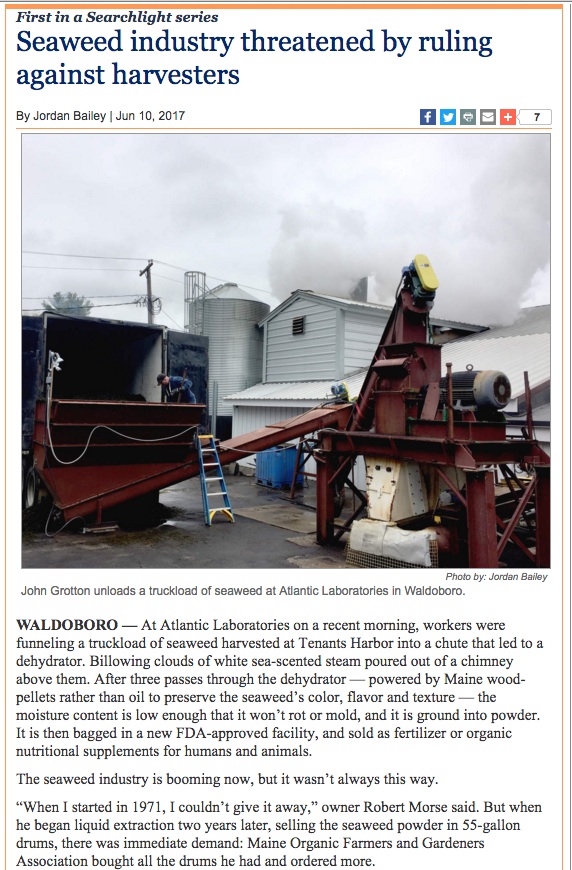
READ COMPLETE ARTICLE HERE
or DOWNLOAD as a PDF
Or DOWNLOAD as a PDF
Or DOWNLOAD as a PDF
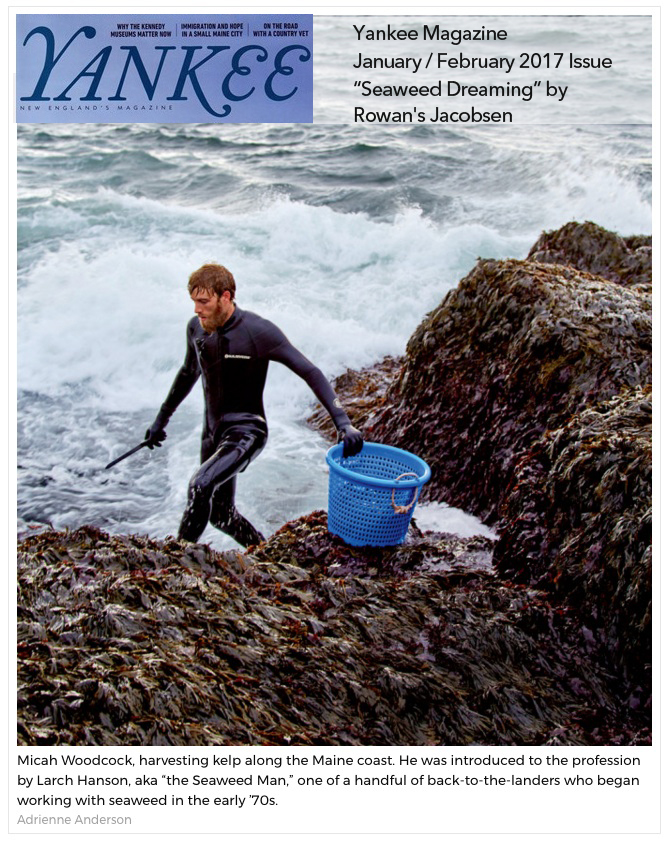
Yankee Magazine Jan / Feb 2017 IssueRead Complete Article of “Seaweed Dreaming”
Or DOWNLOAD as a PDF
Looking For More information? Read more here.
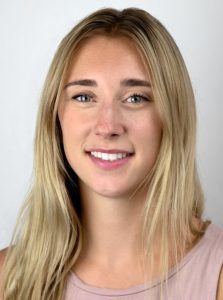 In the great news for the seaweed sector, Maine Sea Grant and University of Maine Cooperative Extension has hired Jaclyn Robidoux , as new seaweed sector Extension associate. She was not able to attend our meeting Tuesday but will be in the future. Here is her bio, feel free to reach out to her!
In the great news for the seaweed sector, Maine Sea Grant and University of Maine Cooperative Extension has hired Jaclyn Robidoux , as new seaweed sector Extension associate. She was not able to attend our meeting Tuesday but will be in the future. Here is her bio, feel free to reach out to her!
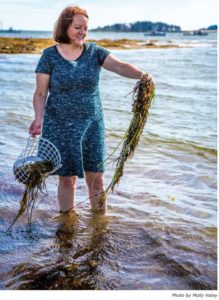 In June 2016, Michele Gilfoil founder of Planet Botanicals, launched a new skin care line, the Maine Seaweed Collection, a series of products including soap, body wash and a “Dream Cream” all made with sustainably harvested Maine seaweed.
In June 2016, Michele Gilfoil founder of Planet Botanicals, launched a new skin care line, the Maine Seaweed Collection, a series of products including soap, body wash and a “Dream Cream” all made with sustainably harvested Maine seaweed.
Learn more about her company and her new product line at Maine Women Magazine.
